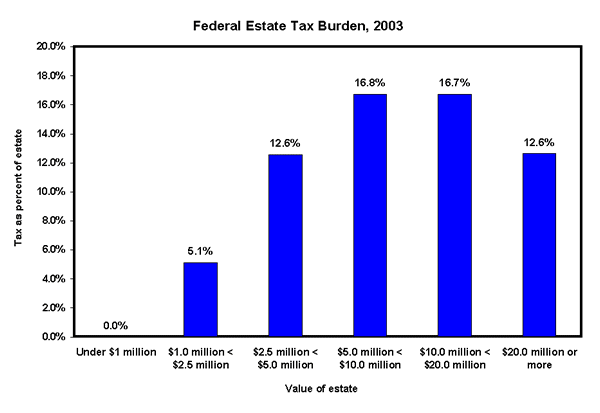See Snapshots Archive.
Snapshot for September 8, 2005.
Death and taxes (part I): who pays the estate tax and how much
Most criticism of the Federal Estate and Gift Tax often exaggerates its impact with claims that 55% or more of an individual’s estate will be taken by the government. The 55% figure actually refers to the former marginal statutory rate of the tax, that is, the amount of each additional dollar due in tax for very large estates. This rate was repealed in 2001. The top marginal rate has since been reduced to 47%, and under current law it phases down to 45% by 2007.
But again, this is only on very large estates. By contrast, the average rate of tax on estates is much less, and for the overwhelming majority of estates, there is no tax at all.
In 2003, of 2.4 million deaths, only 30,627 taxable estate tax returns—1.3%—were filed. This reflected a sharp decrease in filings from just a few years before, when the effective exemption from the tax was much lower. In 2000, for instance, 52,000 taxable estate tax returns were filed. (By comparison, there are about 130 million income tax returns filed annually.)

In the chart above, the blue bars reflect the percent of estates’ value paid under the tax. The basic exemption allowed when filing this tax shielded estates under $1 million in value from any tax whatsoever. The highest average rates do not exceed 17% and apply to estates between $5 and $20 million, which comprised less than 8% of all estate tax returns.
Read Death and taxes—part II.
This Snapshot was written by EPI economist Max B. Sawicky.
